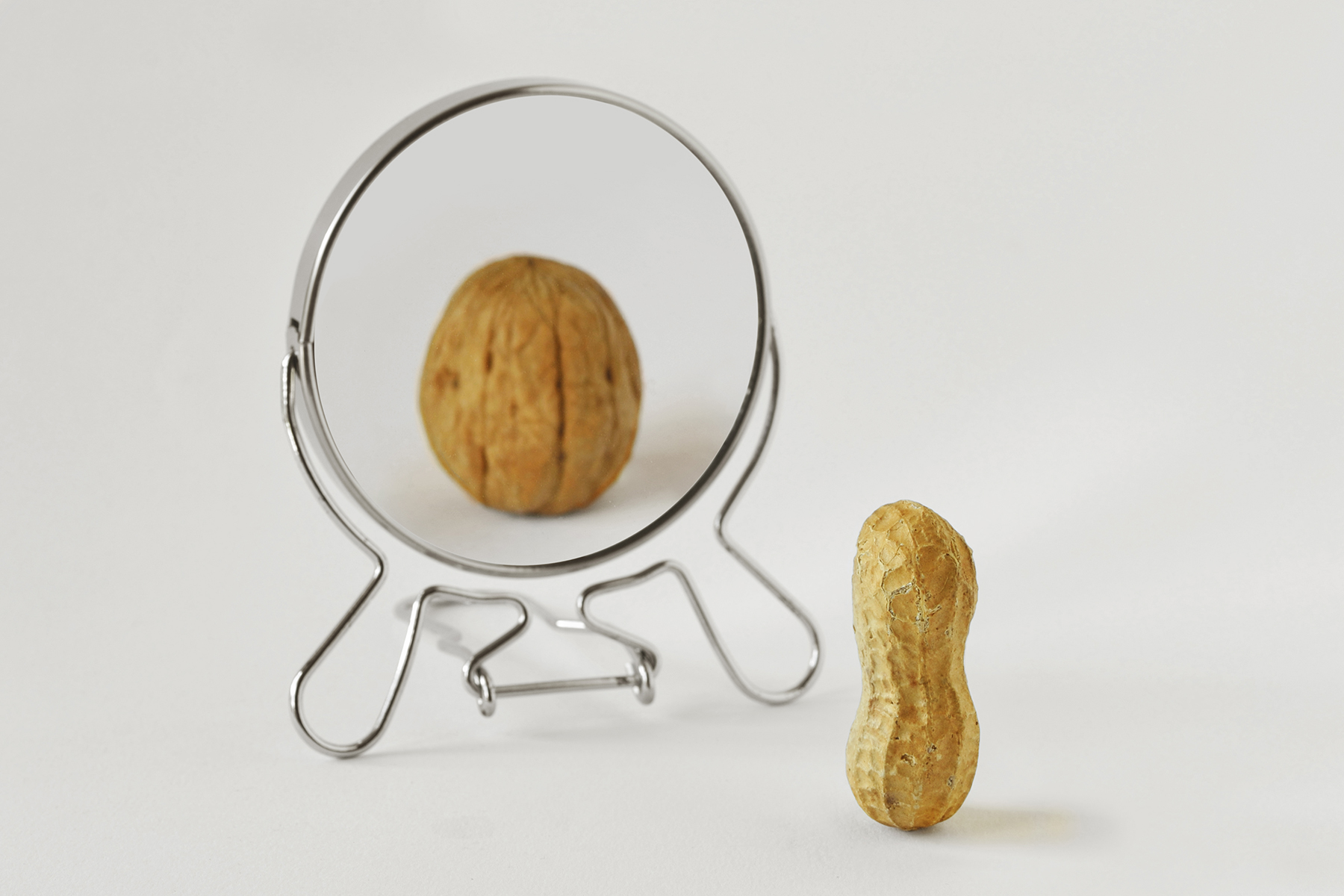Eating disorders are very complex and manifest in a myriad of ways, and there are six types of eating disorders generally recognised. These are; Avoidant/restrictive food intake disorder (ARFID), Anorexia nervosa, Bulimia nervosa, Binge eating disorder (BED), Other specified feeding or eating disorders (OSFED), and Unspecified feeding or eating disorder (UFED). The thing that brings these together is the preoccupation with food, body shape and weight and controlling behaviours around eating.
There’s an excellent explanation of each of these in PsychCentral’s article Types of Eating Disorders.
It is important to identify what you are suffering from and where your behaviours came from, to get the right treatment. But, please note, that you may be experiencing symptoms of multiple eating disorders, or even change from one to another over time. The important thing is to get help and not let the behaviours last too long, or get too severe, as it can be very dangerous and cause long-term side effects. The team at our luxury eating disorder treatment centre in Marbella are here to help.
In today’s article, we will be looking into two of the most common eating disorders – Anorexia nervosa and Bulimia nervosa. We will be explaining what they are, how you can spot the signs of someone experiencing them and also treatment options which are available, for these serious, but highly treatable diseases.
Please contact us if you or your loved one is suffering from eating disorders, we offer high-end bulimia recovery programs and exclusive anorexia treatment.
Eating Disorder Definitions
Anorexia Nervosa
People suffering from Anorexia Nervosa have an intense fear of becoming fat, or putting on weight. In order to avoid this, they will highly restrict their food intake, to the point of self-starvation and often combine this with excessive exercise. This is a very serious condition, with a high mortality rate, and sufferers will usually have a BMI of under 18.5.
Bulimia Nervosa
People suffering from Bulimia Nervosa usually have a pattern of dieting, binging and purging. They often have periods of strict dieting, followed by eating large amounts of high calorie foods and then feeling a sense of shame. To counteract these binges, sufferers can purge by making themselves sick, or using laxatives, or follow binges with fasting or extreme exercise, to avoid putting on weight.
Bulimia is also associated with an obsession with food, weight or body shape and a poor body image. It can be more difficult to identify someone with bulimia, as they won’t always be underweight and they eat more normally in public.
The differences and similarities between anorexia and bulimia
As we mentioned before, both eating disorders tend to come from a fear of weight gain, an obsession with their size, shape and appearance and a preoccupation with food in general. The differences can then be seen in how they choose to control their food intake and limit weight gain.
With anorexia, you will see strategies to avoid gaining weight, or to lose weight. Anorexic patients will eat very little, exercise a lot and have rituals around eating. You may find they weigh themselves often, viewing themselves as overweight even when they are very thin, and wearing baggy clothes to hide their weight loss.
Unlike anorexia, people with bulimia, may be seen to eat more normally, or even overeat. They are often a normal weight, or may even be slightly overweight. But with this eating disorder, they will then take steps to remove the “bad” food from their system, to stop them from gaining weight. This can be by vomiting or using laxatives or enemas to purge their system.
However, in both cases, sufferers have a very low self-esteem, low confidence, high anxiety and are very unhappy, having to cut themselves off from the world to hide their behaviours. It can be very damaging, physically and mentally. That’s why getting a diagnosis and treatment is key and where eating disorder treatment centres like ours come in.
What causes eating disorders?
This is a very complex question, as everyone is different, and eating disorders are seen across every part of the world, every socio-economic level and in every part of society. However, the National Centre for Eating Disorders says that “someone with any kind of eating disorder is more likely to be sensitive, prone to anxiety, has high standards yet poor self-confidence”. Other risk factors include having parents with food issues, fat-teasing at home or at school, abuse, neglect or abandonment in childhood, trauma or loss in childhood, early puberty and obesity in childhood. But, everyone is different, and these risk factors are not present in all sufferers of anorexia or bulimia.
The key is not to blame yourself, feel it is a lifestyle choice, or blame your family or friends. It can happen to anyone, and the only focus should be to identify the problem and seek treatment as soon as possible, to limit the mental and physical damage it can cause.
How can you spot signs of anorexia, bulimia and other eating disorders
Eating disorders will often first exhibit as a fear of gaining weight, followed by extreme dieting behaviours.
Look out for controlling behaviour around food, avoiding eating, or eating very small amounts of highly restricted food groups or food rituals.
Beware of an obsession with weight or size, which could manifest as weighing themselves repeatedly, a distorted view of their weight and size and weight loss.
People with eating disorders of all kinds, often withdraw themselves from friends and family and stop doing things they previously enjoyed. You often see mood swings, secretive behaviour and difficulty sleeping and concentrating.
With anorexia, you will usually see a dramatic loss of weight, brittle hair and nails, dry and yellowish skin, fine hair all over the body, extreme tiredness and lethargy, feeling cold all the time, dizziness and missed periods. Please take these symptoms very seriously, as anorexia can cause damage to the heart, brain damage and even multiorgan failure.
With bulimia, the symptoms tend to be related to purging and vomiting and sufferers will often experience sore throats, swollen glands in the neck and jaw, bad teeth, dehydration and gastrointestinal problems such as acid reflux. Once again, please take these symptoms seriously and seek help, as electrolyte imbalance can lead to stroke or heart attack.
Treatment for anorexia and bulimia
Thankfully, people with eating disorders respond very well to treatment, particularly when it is caught early and when the treatment is holistic and multi-faceted. The best treatment combines therapy and counselling on an individual and group basis, with nutritional support and education, coping strategies and practical support for healthy living outside the treatment centre.
Eating disorder treatment can be given on an outpatient basis, if the issue is not as severe and you want to continue with work or study and feel able to be at home, while recovering. However, due to the secretive nature of eating disorders, it can be very difficult for parents, or family members to know whether the behaviours are continuing and for the professional support being given to be able to trust the reports that the patient is giving them. This can hold back the effectiveness of the treatment.
We strongly believe in the benefits of residential eating disorder treatment centres, because the treatment can be more intensive and the environment highly controlled. With eating disorder specialists by their side every step of the way, progress can be rapid. With supervised meals and carefully designed meal plans, nutritional rehabilitation, education and weight restoration can take place safely and effectively. Physical strength can be built through gentle exercise and activities such as yoga to manage stress and anxiety, as well as increasing strength and flexibility. Mental strength and resilience can also be built through therapies such as CBT, psychodynamic and person-centred therapy, group therapy and psychoeducation. Combining a wide range of therapies and activities, with delicious and nutritious food in the safe and comfortable setting of a luxury eating disorder treatment centre it is possible to get amazing, lasting results quickly, with minimal disruption.
Here at The Bridge, we know that every person who is suffering from an eating disorder is an individual and experiences their disease in a slightly different way. That’s why our luxury eating disorder treatment centre takes a holistic and bespoke treatment approach. Our aim is to support our clients to get to the bottom of where it all started, really understand why they have this problem, and then give them the therapy and the tools to live a life free of eating disorders. Contact us to find out more.




